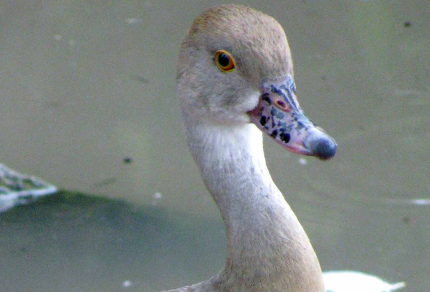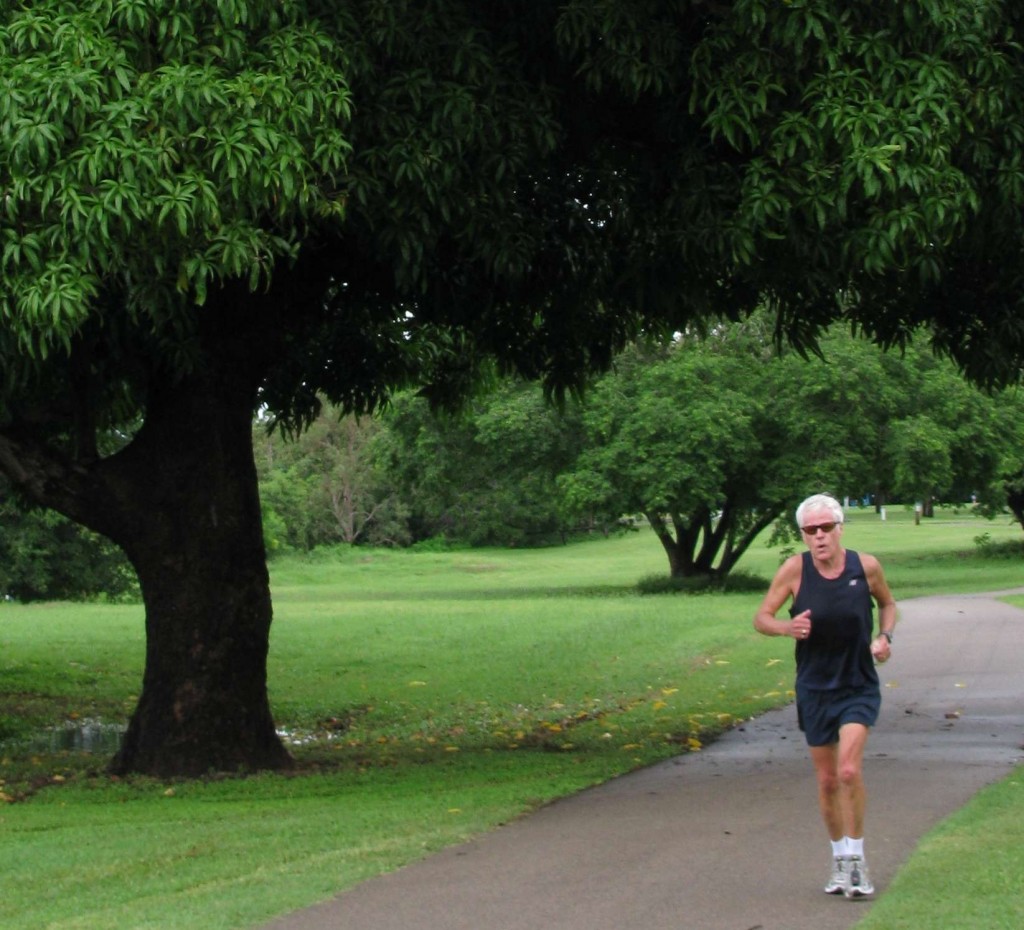
Runner in Ross River Parkway (© Magi Nams)
By morning, the mesmerizing clouds of last evening had disintegrated into a rumpled grey roof over the Townsville sauna. Darkness still clung to the streets at 5:40 a.m., so I held my watch up close to my face to read the time for my run/walk intervals. Crickets eased from night rhythms into day music, accompanied by groggy avian vocalists. A kookaburra was the first to really break out, projecting its haunting, maniacal laugh into the dawn until the sound soared over trees and streets and consciousnesses with wild, uncontrolled beauty.
The first runners and walkers I met were like shadows of myself moving towards dawn. Oncoming bike lights were white eyes in the lifting darkness. Retreating red flashers were vivid flickers of fire. This morning it was humans, not scenery or wildlife, that urged me on – a trio of young women running and chatting, an elderly man taking slow, careful steps, a burly male cyclist pedaling hard along the trail. On the banks of this city’s powerful, beautiful river, a built-in support system is in place for the pursuit of a healthy lifestyle. We could call ourselves the Ross River Knights, anonymously upholding one another.
After I returned to the house, I wondered, out of nowhere, what the top priority is for wildlife management in Australia. In Canada, it’s habitat management. In New Zealand, which was a land of birds until humans arrived on the scene, the priority is killing introduced mammals that have wreaked havoc on native bird populations. I suspected, having heard about the effects that cane toads and tilapia have had on native Australian fauna, that the control of introduced species might also be a top priority here.
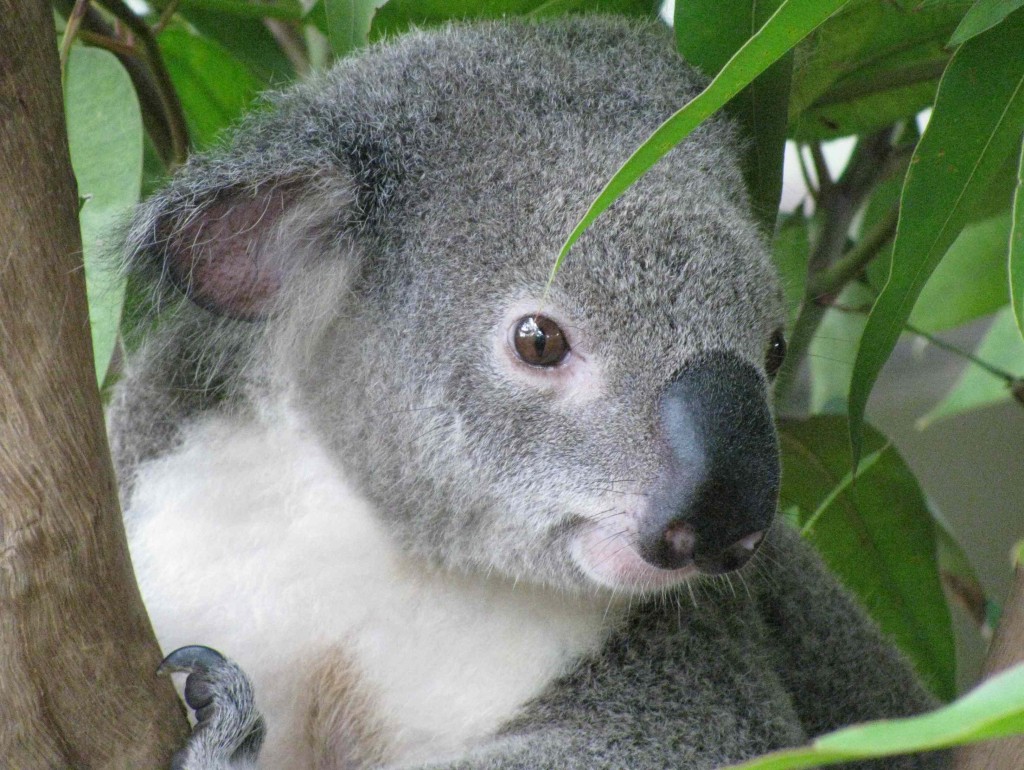
Koala (© Vilis Nams)
When I went online after breakfast, I learned that Australia is one of 17 countries considered to be ‘megadiverse,’ that is, having a huge diversity of plant and animal species.1 The countries, which also include The Congo, South Africa, Madagascar, China, India, Indonesia, Malaysia, Papua New Guinea, the Philippines, Brazil, Colombia, Ecuador, Peru, Venezuela, Mexico, and the United States, together occupy less than 10 percent of the earth’s surface, but provide habitat for over 70 percent of the earth’s species of living organisms.1 Thus, they are the major wells of global biodiversity.
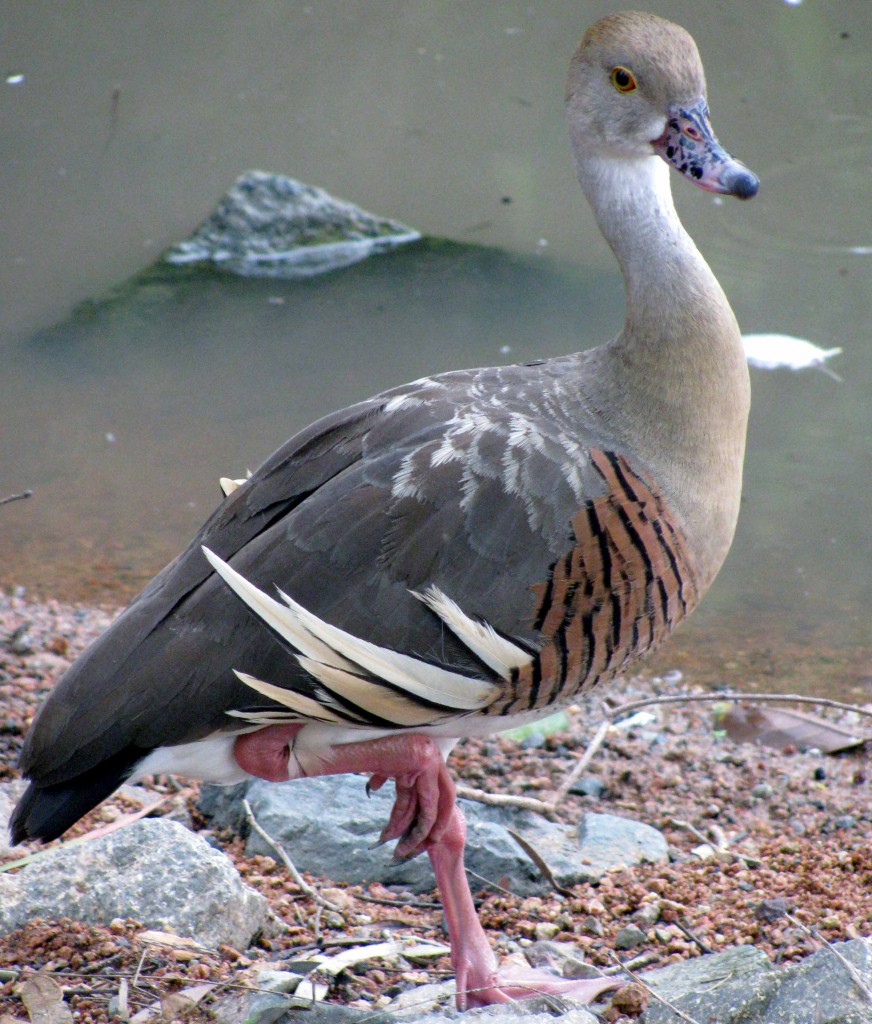
Plumed Whistling Duck (© Magi Nams)
As one of these biologically wealthy countries, Australia is home to between 600,000 and 700,000 species, many of which occur nowhere else on earth; that is, they are endemic to this continent.1 An astounding 84 percent of Australia’s plants, 83 percent of her mammals, and 45 percent of her birds are endemic.1
I further discovered that Australia has designated 15 biodiversity ‘hotspots,’ locations with high proportions of rare or endemic species that are under threat from human activity.1 When I skimmed through the hotspot summaries, the same kinds of threats appeared again and again. Clearing land for agriculture or urban or tourist development has destroyed habitat, fragmented remaining habitat, disrupted fire regimes and natural drainage, and caused both increased dryland salinity and sedimentation of rivers.1 Heavy grazing pressure by livestock, added to that of kangaroos and feral rabbits, camels, goats, horses, and water buffalo, has degraded land and facilitated the spread of invasive weeds.1,5 Introduced predators like foxes, cats, pigs, and cane toads have destroyed native wildlife.1,5 It seems as though Australia’s top wildlife management priority may in fact be a combination of Canada and New Zealand’s two priorities, that is, maintaining undisturbed habitat for sensitive native species and controlling introduced pest species.
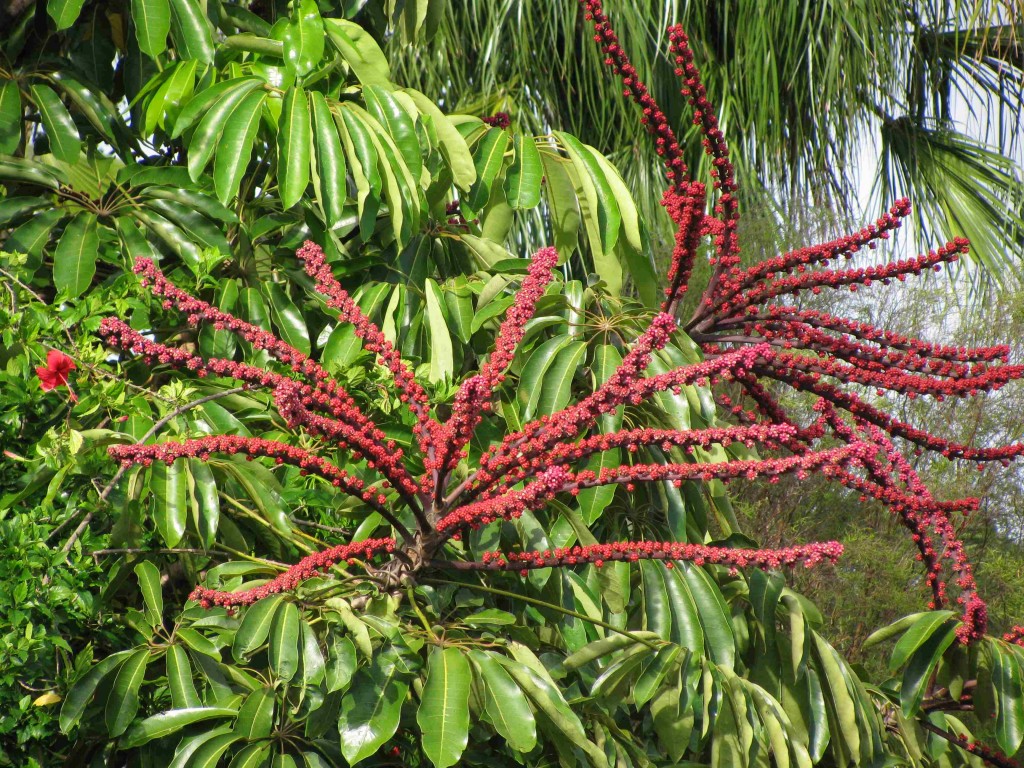
Umbrella Tree Flowers (© Magi Nams)
Recently, I heard on ABC radio that over a million feral camels (whose ancestors were used for transportation by early explorers) now roam the interior of this country, and that landowners want aerial culling of the pests.2 Red foxes, which were introduced to Australia in 1845 for sport hunting, have spread throughout all but the far north of the continent and are known to be the primary agent causing the extinction of dozens of species of native marsupial mammals.3,4 Within the past ten years, evidence of red fox presence on the island of Tasmania has prompted a massive effort to eradicate the highly adaptable carnivores before they devastate the island’s native species.3 It’s an ecological irony that this country’s long history of isolation from other continents, which led to the development of its highly diverse and endemic flora and fauna, is the same factor that puts it most at risk from species of other lands against which Australian species have no defences.
In mid-afternoon, I rushed outdoors and yanked laundry off the clothesline even as the first raindrops fell. Thunder and a heavy shower followed, the sky darkening into wet gloom. At 5 p.m., Vilis appeared on the doorstep, drenched, having cycled through downpours on his ride from James Cook University. We haven’t had the cyclone he wanted, but we’ve certainly been experiencing the Wet. “I saw a woman and three kids out in the rain,” he told me. “They looked like they were playing in it.” Perhaps if we’d arrived at the start of the lengthy dry season rather than the beginning of the Wet, we’d be playing in it, too.
Reference:
1. Australian Government, Department of the Environment, Water, Heritage and the Arts. Biodiversity hotspots. Updated 28-Jul-2010. Accessed 11-Feb-2010. http://www.environment.gov.au/biodiversity/hotspots/index.html
2. ABC Rural. Feral camels invade WA properties. February 2, 2010. Accessed 23-Nov-2010. http://www.abc.net.au/rural/news/content/201002/s2807936.htm ; ABC News. Feral camel numbers ‘double’ official estimate. February 1, 2010, 8:29 a.m. Accessed 23-Nov-2010. http://www.abc.net.au/news/stories/2010/02/01/2806223.htm
3. Australian Government, Department of the Environment, Water, Heritage and the Arts. Invasive species: Invasive species fact sheet: European red fox (Vulpes vulpes). Updated 16-Feb-2009. Accessed 18-Aug-2010. http://www.environment.gov.au/biodiversity/invasive/publications/european-red-fox.html
4. Columbia University, Invasion Biology Introduced Species Summary Project: European Red Fox (Vulpes vulpes). http://www.columbia.edu/itc/cerc/danoff-burg/invasion_bio/inv_spp_summ/Vulpes_vulpes.htm
5. Australian Government, Department of the Environment, Water, Heritage and the Arts. Feral animals in Australia. Updated 26-Nov-2007. Accessed 30-Sep-2008. http://www.environment.gov.au/biodiversity/invasive/ferals/

